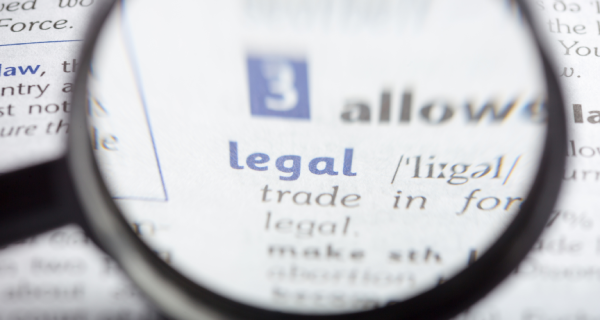Debt recovery in Singapore presents a complex landscape, especially when dealing with Accounts Receivables (ARs). This process, essential for maintaining the financial stability of businesses, requires a deep understanding of both legal frameworks and practical strategies. In Singapore, the key to successful debt recovery lies in navigating the intricate legalities and leveraging a strategic approach to evidence presentation. This overview aims to shed light on the nuances of managing ARs within the Singaporean context, highlighting the importance of precise documentation and the challenges posed by reliance on general ledger entries in legal proceedings. By focusing on these critical aspects, businesses can enhance their capabilities in effective debt recovery, ensuring better financial health and sustainability.
Understanding Accounts Receivables in Business Context

Accounts Receivables play a crucial role in managing the financial health of a business. They represent the credit a company extends to its customers, a common practice in commercial transactions. Understanding how AR works and its implications is vital for effective business management.
Definition and Common Misconceptions
Generally, businesses define Account Receivables (‘AR’) as money that customers owe to a business for goods and services they have purchased and received but not yet paid for. Many businesses, therefore, view ARs simplistically as a straightforward claim against the customer for a due and owing debt. However, for the reasons below, this is rarely the case.
Legal Framework and Claims for Trading Debts in Singapore

In Singapore’s legal context, the treatment of Accounts Receivables is nuanced, especially when it comes to recovering debts. Understanding the legal framework surrounding AR is essential for businesses to effectively manage and recover these debts.
Contractual Basis of AR Claims
Generally, a claim for a trading debt tends to be framed as a claim for a breach of contract. This means that the business needs to show the existence and terms of an agreement with the customer, and in such cases that the customer had obtained the goods and services but exceeded the payment terms. Therefore, having a clear written agreement provides a strong foundation for the claim.
The Role of Written Agreements
After establishing that the customer is liable for breaching the contract between parties, ARs are then presented as a secondary piece of evidence to show the amounts from the customer to the business.
Evidential Challenges with General Ledger Entries

The evidential value of Accounts Receivables, particularly when presented as general ledger entries, poses unique challenges in legal settings. It’s crucial for businesses to understand these challenges to prepare effectively for potential litigation.
Legal Status of General Ledger in Singapore
ARs tend to be entries in a company’s general ledger, which does not have a special evidential status in Singapore law as they are documents generated by the company and still have to be proven by the maker under the Evidence Act 1893.
Risks in Relying on General Ledger for Claims
Besides disclosing the general ledger to the opposing party and the court, the company also needs to present the maker of the general ledger as a witness at trial. This exposes the witness to cross-examination by the opposing lawyers, presenting a risk to the claimant. Any accounting errors that surface during this process can undermine the claim. If the Accounts Receivables (ARs) lack proper supporting documents, the judge might doubt the claim’s basis and award little or no monetary compensation to the claimant.
Strategic Approaches in Litigation

The strategy adopted in litigation involving Accounts Receivables can significantly impact the outcome. Businesses must consider alternative approaches and evidence to strengthen their legal position.
Alternative Documentary Evidence
Therefore, a claimant in Singaporean litigation may choose not to rely on general ledger entries but prefer to refer to other documents available to both parties where the price of the goods and/or services have been stated, and if necessary, provide evidence of delivery.
Assessing the Quantum of Claim
Consequently, this approach reduces the risk of the judge doubting the reliability of the Accounts Receivables (ARs). Furthermore, it allows the court to focus directly on the issue of quantum, eliminating the need to cross-examine the maker of the general ledger. This streamlined process ensures a more efficient resolution of the matter.
Broader Business Implications of Outstanding ARs

Outstanding Accounts Receivables can be a symptom of larger issues within a business. Firstly, it is important to delve into the reasons behind non-payments. These reasons could range from internal inefficiencies, such as poor invoicing processes or lack of follow-up, to external factors like customer insolvency. Understanding these underlying causes is crucial for addressing the issue effectively and ensuring the financial health of the business.
Investigating Non-payment Reasons
Taking a step back from the proceedings, the existence of trading debts requires the business to investigate the reasons for non-payment, especially when the customer has been a good paymaster in the past or has defaulted for quite some time.
Dealing with Customer Insolvency
The business should exercise caution against throwing good money after bad, especially here. The business risks incurring further losses if it hastily decides to initiate legal proceedings without understanding why the payments failed. Good customers do not usually desire to become bad customers. Sometimes insolvency creeps up on those good customers and they become unable to pay their debts. In situations where creditors compete for a company’s limited assets, each creditor often hesitates to be the first to take legal action due to concerns about not recovering legal costs. It’s crucial for creditors to monitor the situation closely. They should watch for a major creditor to initiate the company’s reorganization. If this happens, other creditors can then follow suit and potentially recover a portion of their outstanding Accounts Receivables (ARs).
Conclusion
In conclusion, Accounts Receivables are more than just numbers on a balance sheet. They are indicators of a company’s financial health and business relationships. A nuanced approach is essential in handling ARs, particularly in the context of potential litigation and business strategy to debt recovery in singapore.
Reassessing the Significance of ARs
In conclusion, ARs do not necessarily arm a business with a strong claim leading to an enforceable judgment. A large number of outstanding Accounts Receivables (ARs) indicates a significant underlying issue. This situation often stems from an internal failure to collect payments or signals potential customer insolvency. It is crucial to focus on solving the root cause of the problem instead of merely addressing the superficial symptoms.


